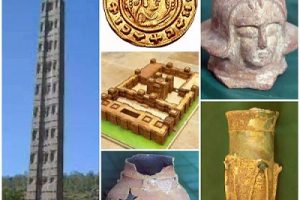
If you recall we have been traveling to the South and we made our stop enjoying the Barta waterfall in Kefa Zone last week. The greenery and the waterfall are gifts of nature that have kept everything in balance.
The elderly who live in this area relate how important it is to protect such a blessing for the wellbeing of all creatures.
A friend of mine, who once visited the area, told me that an elderly man, whom he approached, remarked that “The local people take care of this place as the apple of their eyes!” “Had these natural forests not existed, we would never have survived at all. As long as this natural resource is protected, we are able to plant, harvest and keep our breath,” the elderly man said.

It is obvious that the world is severely suffering from rapid climate change and global warming. Therefore, as the elderly man put it, protecting the green beauty that we are left with and working hard on resuscitation of those we have inflicted damage on should always be a serious issue of concern for all members of this generation throughout the world.

Anyways, it is time for us to leave the Barta waterfall and make our way back to Bonga town, where we will spend the night. It did not feel like we have almost spent three hours in this beautiful place. Had the sun not been due to sink in the west, we would have walked on foot to the place where we left the vehicles. We would have chosen to stay for more hours enjoying the green beauty and the peaceful sound of Barta waterfall.
Hitting the road on foot one may encounter people carrying on their shoulders a wood-made stretcher on which sick person or a woman due to deliver slept .They could be heading to a close by hospital.
Or when you ask the people about the situation, they could say that they are hauling a woman, who gave birth in a nearby health center, back to her village.
There will also be a time that a stranger will learn that it is forbidden to ignore such a situation and simply pass by. It is a tradition to help carrying the weak no matter who they are and where they are heading. It is a humanly decourm to take turns and assist carrying the mother of a newborn baby, who is the future hope of this world. In return, one will be showered with warm gratitude and blessing from the woman’s family as well as the elderly. How lucky the baby is, being born in this beautiful place and to such humble society!
Now back to our next trip. It is early in the morning and we are heading to Qejja Haraba of Kefa, where another natural coffee forest awaits us. The local people in here have a traditional way of protecting a natural coffee forest. Historical documents indicate that Kefa is not only the cradle land of coffee but it has been the top coffee producer and seller in Africa even before the era of Emperor Menelik.
We are traveling along a forest that is full of different types of spice trees like mace, Timiz and fennel as well as strawberry. Yet, we still have to walk some few hundred meters to reach the coffee forest.
There it is, the time-old Qejja
Haraba natural coffee forest with its big broad trees, which the branches are
encircled by creeping plants and where grasses grow luxuriously. One can tell
that this coffee forest has existed for a very long period, may be for many
thousands of years, by looking at the broad coffee trees and the creeping
plants that made meshes around the branches.
There are paths unbeaten by human beings. The greater passion of the local people, who live around the forest, for the forest, has helped to maintain the area’s majestic grace and originality. Leave alone attempting to cut the trees, they would not even dare to hack through the thick undergrowth.
Qejja Haraba coffee forest is not only a heavenly place for tourists, it is also a study center for researchers of such nature. Even if I did not stand a chance to see it, it was said that the unique parrot with a yellow color on its forehead can also be found in this green coffee forest.
Kefa has got registered its dense natural forests on UNESCO’s world heritage list. The sample and collection of its peoples’ natural and cultural values that surfed the tide of time like the traditional housing, dressing and feeding systems as well as equipment that the people use during wars, farming and home activities are all placed in the ‘Coffee Museum’ at the heart of Bonga town.
However, there is a lot to be desired from the Culture and Tourism Bureau of the SNNP’s State and the Zone Administration regarding promoting this magnificent place as one of the best tourist attractions in the world. Building more infrastructural facilities must be their priorities.
Despite the fact that Kefa is the origin of coffee and a place of green natural beauty, it is also the hometown of the renowned international space scientist Engineer Kitaw Ejjigu. The world is expected to know about and enjoy the breath taking natural, cultural and historical heritages that remain hidden in this green beauty.
Our travel to the south west of the SNNPs State may end right here for now. But we will continue traveling more to other parts of Ethiopia for more awe inspiring natural, cultural and historical places, such as the world’s hottest but colorful sites of the Great Rift Valley, the Afar Depression in particular.
The Ethiopian Herald Sunday Edition 15 September 2019
BY HENOK TIBEBU




